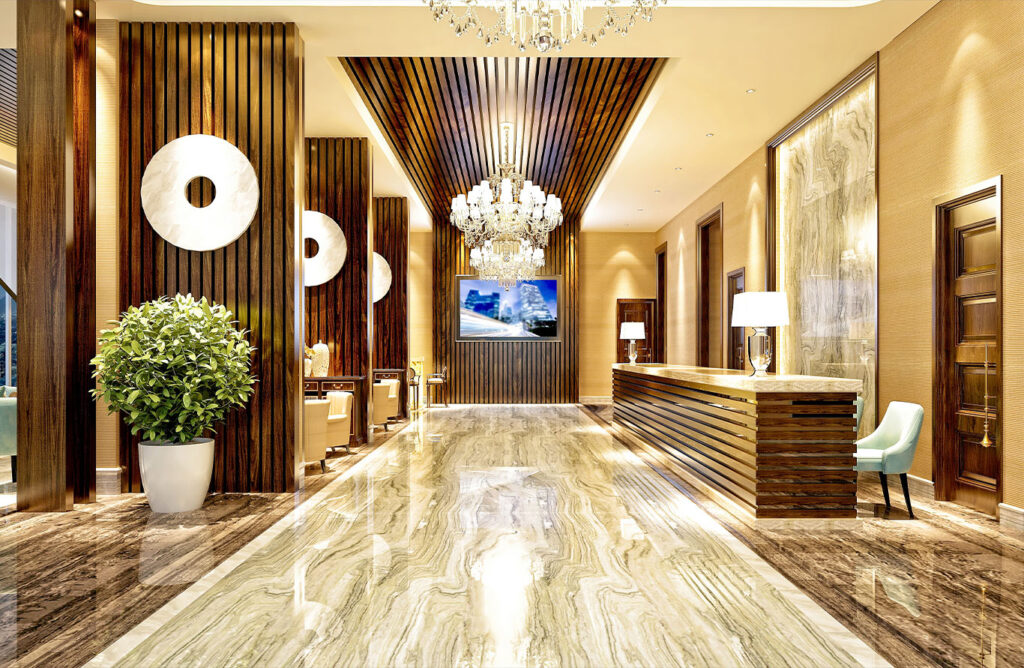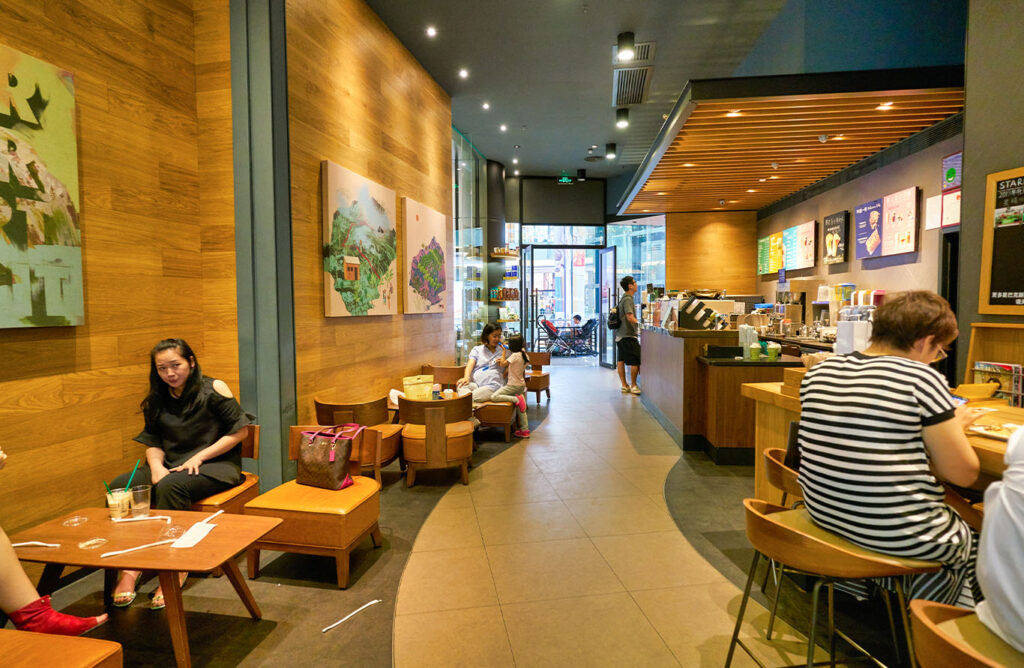An Expert POV: Ed Corin
Are you planning an AV upgrade or fitout for your hotel, conference center, or event space? As decision makers and buyers for the hospitality industry, it’s crucial to consider the essential aspects of audio, video, and digital signage systems before making any investment.
In this blog post, we’ll provide you with expert advice from our in-house AV specialist, Ed Corin, to help you make informed decisions and create a cutting-edge AV environment that meets your specific requirements.

Ed Corin – Chief Technical Officer
Ed started out his audio career in 1990 working in London’s west End for Autograph Sound Recording, Europe’s leading theatre sound design and rental company. He operated audio systems in some of the West End’s top musical productions including ‘Cats’, ‘Grease’ and ‘Carousel’.
Ed began installing and programming AMX and other control systems over twenty years ago. He has reached the AMX ACE Installer, ACE Programmer and ACE Designer standards which qualifies him as an AMX Expert. He is one of very few people in Ireland to have reached these standards with AMX. Ed successfully designed and implemented the control system programming for The Courts Service of Ireland over the last fifteen years. Ed’s expertise and experience are invaluable in his approach to each project delivered to our clients. In addition to the above he is also qualified to program Extron and Medialon control systems.
As head of technical design and installation department Ed has authority over each project and provides direction to the scope, budget, schedule, resources, and quality of all projects. Ed will oversee all design and installations. Outside of work, Ed enjoys travel, theatre, movies, eating out and playing golf.
Audio
When it comes to audio, it’s important to determine the purpose and capabilities you need for your hospitality space. Are you planning on having background music, after-dinner speeches, or even live performances by bands and DJs? Understanding the level of audio output required is essential for designing the right system.
Consider the number of people your audio system needs to cover and the dimensions of the room. This will help determine the number and placement of speakers for optimal sound distribution. Additionally, identify the inputs you’ll need for your audio system. Will you have music sources, radio microphones, or wired microphones? Should your setup accommodate video conferencing or any other specific requirements?
It’s also crucial to consider the physical characteristics of your space. Can you hang an array of speakers, or is it not practical? Assess the construction materials of your walls and determine if they can be drilled for installation purposes. Remember, some older buildings may have restrictions on fixing anything to the walls, especially if they are listed.
Additionally, ensure that you have a suitable location for a rack to house the audio processor and amplifiers. Consider the presence of cable ways for running wires to speakers and connecting wired microphones or line inputs. While ceiling speakers may seem like a convenient option, they can create challenges when it comes to capturing audio effectively with microphones.
Lastly, budgetary considerations are crucial. Knowing your budget will enable us to design a system that aligns with your financial capabilities. Speaker prices can vary significantly, from a couple of hundred pounds to hundreds of thousands. We want to ensure that your AV setup matches your budgetary expectations. There’s no point in designing a Ferrari if the budget will only cover the cost of a Hyundai!!


Video
Video plays a vital role when it comes to presentations, video conferencing, and digital signage in hospitality environments. It’s essential to clearly define your video system requirements to create an immersive experience for your audience.
Consider the purpose of your video system. Will it be mainly for presentations, or do you require video conferencing capabilities? This information will help determine the necessary inputs for your setup, such as video sources, laptops, digital signage, and TV signals. If you plan to incorporate TV signals, identify the source and its location within the room.
When assessing the video system, think about the coverage area and room dimensions. If your space has large windows, you may require a brighter display or projector to counterbalance the natural light. Additionally, you may need to consider electric or manual blinds/drapes to control lighting conditions. For video conferencing, ensure participants avoid sitting with their backs to large windows, as this results in silhouettes rather than clear facial features.
You must decide whether a monitor or a projector and screen are more suitable for your setup. Determine the optimal screen size based on the room size and the average viewing distance. As a rule, the screen height should be approximately 1/6th the distance from the furthest viewer. For example, in a 6-meter-long room, a 1-meter screen would be appropriate, equivalent to a 75″ screen.
Like audio considerations, evaluate the construction materials of your walls to determine if drilling is possible. Compliance with building regulations is crucial, especially for listed buildings that may have restrictions on wall fixtures.
Identify a suitable location for rack installation to house the switching and distribution components, if required. It’s essential to have adequate cable ways for running wires to the monitor, projector, or screen. Additionally, consider if a lift mechanism should hide the projector or projection screen in the ceiling when not in use.
As with any project, defining your budget is essential. Doing this at the beginning of the project ensures that the AV system is designed to meet your financial expectations and specifications.


Digital Signage
Digital Signage offers an excellent opportunity to enhance your hospitality space, whether for wayfinding, advertising, communicating essential messages, branding a space or other purposes.
Before incorporating digital signage into your environment, consider the following factors:
Start by clarifying your objectives. What would you like to achieve with digital signage? This information is crucial in designing a system that meets your needs effectively. Determine if you require portrait or landscape orientation and assess the floor area and room dimensions to choose an appropriate screen size.
Again, evaluate the construction materials of your walls to determine if drilling is possible without violating any building restrictions.
Consider whether your digital signage will be indoors or outdoors, as this will impact the choice of equipment and protection requirements. If placed outdoors, an outdoor suitable model or a protective housing may be necessary to safeguard the signage from weather conditions or vandalism. Additionally, determine if interactivity is required for your signage system.
Lastly, establish if you need one screen or multiple screens. If multiple screens are needed, determine whether they will display the same content or require individualised information as this will impact the choice of software and operating systems.


Power, Data, and Cabling
In all AV and digital signage installations, no matter how small, there will be a need for power, data, and cabling. Early engagement with electricians is crucial to ensure that these facilities can be provided at the desired locations. Assessing power requirements, data connectivity, and cable routing will help avoid any issues during the installation phase. Close collaboration between AV specialists and electricians will ensure a seamless integration of your system.
Planning an AV upgrade or fitout in a hospitality environment requires careful consideration of audio, video, and digital signage systems. By understanding your specific needs and goals, our team of experts can create detailed technical drawings and design a solution that aligns with your budget and vision.
Contact us today to discuss your project requirements and leverage our (Ed’s) expertise in AV, digital signage, and video conferencing solutions.






